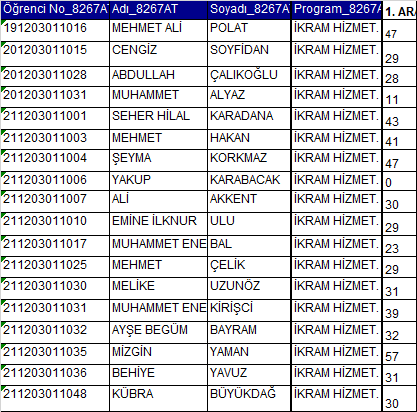20 Kasım 2022 Pazar
10 Kasım 2022 Perşembe
2 Kasım 2022 Çarşamba
KEY WORDS FOR UNIT 1 AND 2 (English For Engineering)
UNIT 1 pp. 12-13 vocabulary
jargon (n)= a characteristic language of a particular group or subject or field. For example: engineering jargon; doctor’s jargon; etc.
foundation (n)= base which supports a building or structure, usually made of concrete
pile (n)= foundation which comprises a vertical column or concrete in the ground
reinforcement (n)= networks of fibres or bars which are placed inside a material to strengthen it, e.g. steel reinforcement in concrete
strength-to-weight ratio (n)= toughness of a material (ability to resist breaking) relative to its density
density (n)= mass/volume
structural engineer (n)= engineer who specialises in the design of structures, e.g. bridges
CEFE Unit 1 pp 8-9 key words
decade (n)= ten years
takeoff (n)= departure; getting started
take off (v)= depart; get started
component (n)= part of an assembly/mechanism
payloads (n)= goods; cargo
altitude (n)= height
colossal (adj)= very big; huge
geostationary (adj)= fixed with respect to a position on Earth
phenomenal (adj)= extraordinary
unmanned (adj)= without any humanbeings; pilotless; lacking a crew
space debris (n)= space junk such as unneeded (redundant) satellites, etc.
offshore (adv)= away from the shore; at a distance from the shore, on a body of water
anchoring (n)= any of various devices dropped by a chain, cable or rope to the bottom of a body of water for preventing or restricting the motion of a floating object such as ships, etc.
propulsion (n)= the act of propelling
propel (v)= to drive, or cause to move, forward or onward
Vocabulary
Navigate (v): find the way to a place , especially by using a map
Avionics: the electronic devices in an aircraft or a spacecraft
Mining: the process of getting coal or other minerals from under the ground
Maritime (adj): connected with the sea or ships a maritime museum
4 c Vocabulary
Core: the most important part of sth; primary; main
Locate: find the exact position of sb/sth
Precise: correct, exact
Simultaneously: happening at exactly the same time as sth else Two children answered the teacher's question simultaneously.
Dedicated: designed to do only one particular type of work; used for one particular purpose only Constellation: a group of stars that appears to form a pattern or picture like Orion the Great Hunter, Leo the Lion, or Taurus the Bull. Constellations are easily recognizable patterns that help people orient themselves using the night sky.
Cambridge English for Engineering Unit 1 pp. 6 - 7 key words
v= verb; n= noun; adj= adjective; adv= adverb; prep.= preposition
primary (adj): main; core
associated (adj): related
drift (v / n): to be / being in motion due to some air or water current
innovation (n): invention; creating sth new
innovative (adj): new; modern; advanced; creative
topography (n): precise detailed study of surface features of a region
surveying (n): exploration; examining; inspection; research
avionics (n): science and technology of electronic systems and devices for aeronautics and astronautics
aviation (n): the art of operating aircraft
maritime (n): relating to or involving ship or shipping or navigating on sea (=nautical)
ensure (v): guarantee
enable (v): make sth possible to be done / make sth possible for sb to do
constellation (n): configuration
KEY WORDS FOR UNIT 1 AND 2 (English For Enginnering)
Cambridge English for Engineering Unit 2 pp. 20-21 key words
v= verb; n= noun; adj= adjective; adv= adverb; prep.= preposition
gimmick (n)= a trick which is used to attract customers to buy sth
seal (n)= a device, par tor substance that is used to join two things together and/or to prevent (stop) anything passing between them.
joint (n)= the point of contact between two parts
brittle (adj)= easy to break; fragile; tender
durable (adj)= long-lasting; enduring
Cambridge English for Engineering Unit 2 pp. 14-15 key words
v= verb; n= noun; adj= adjective; adv= adverb; prep.= preposition
scrap (n)= junk; waste
scrap (v)= dispose of (sth useless and/or old)
sort (v)= separate; categorize
galvanize (v)= coat with zinc
alloy (n)= a mixture which contains two or more metallic elements or metallic and non-metallic elements
brass (n)= any of various metal alloys which consist mainly of copper and zinc
notably (adv)= especially
scarcity (n)= being very rare (difficult to find)
scarce (adj)= very rare
tin (n)= a soft-silvery white metal which is used in plating and in making alloys
plating (n)= a thin coating of gold, silver etc.
ore (n)= a mineral that contains metal
justify (v)= show to be reasonable
hardwood (n)= wood from deciduous trees which is hard to saw. Deciduous trees are green in Spring and Summer, but lose their leavesin Autumn and Winter.
softwood (n)= wood from evergreen trees which is easy to saw. Evergreen trees such as pine trees are always green in all seasons.
ironmongery (n)= hardware; metal parts
grind – ground (v)= reduce into very small pieces
traces (n)= very small amount of sth
rust (v)= corrode; oxidize
rust (n)= corrosion
derive (from) (v)= obtain/get sth desirable (from sth else)
extract (v)= separate a metal from ore
audit (n)= a methodical examination (analysis) or review of a condition or situation
environmental audit analysing total impact of a product on environment (both positive and negative effects on environment in all phases – pre-use, in-use and post-use).
pre-use phase (of a product) mining the material, transporting it to the factory and manufacturing processes of the product
in-use phase (of a product) the actual use of a product by end-users
post-use phase (of a product) recycling and re-use of the product



